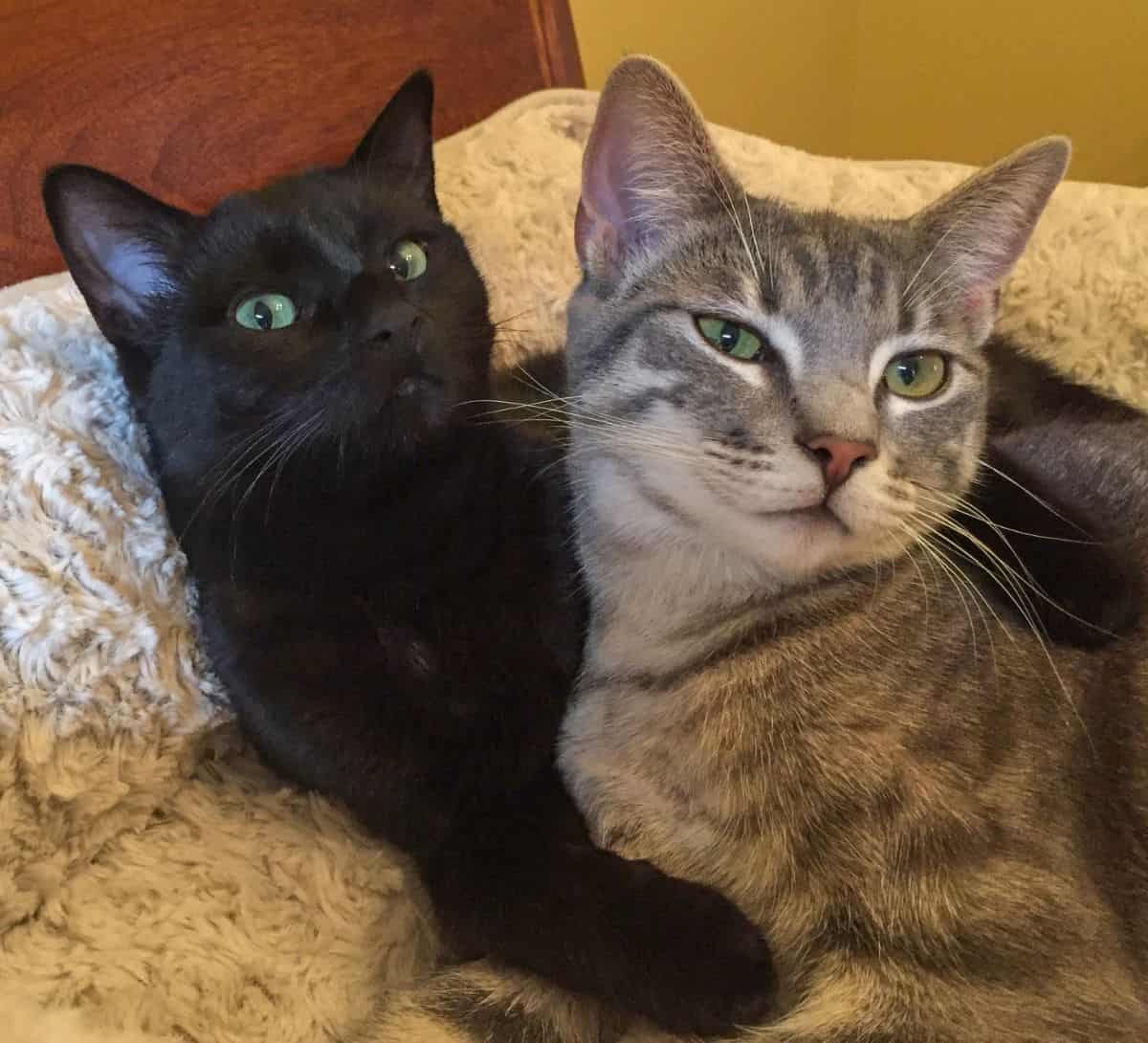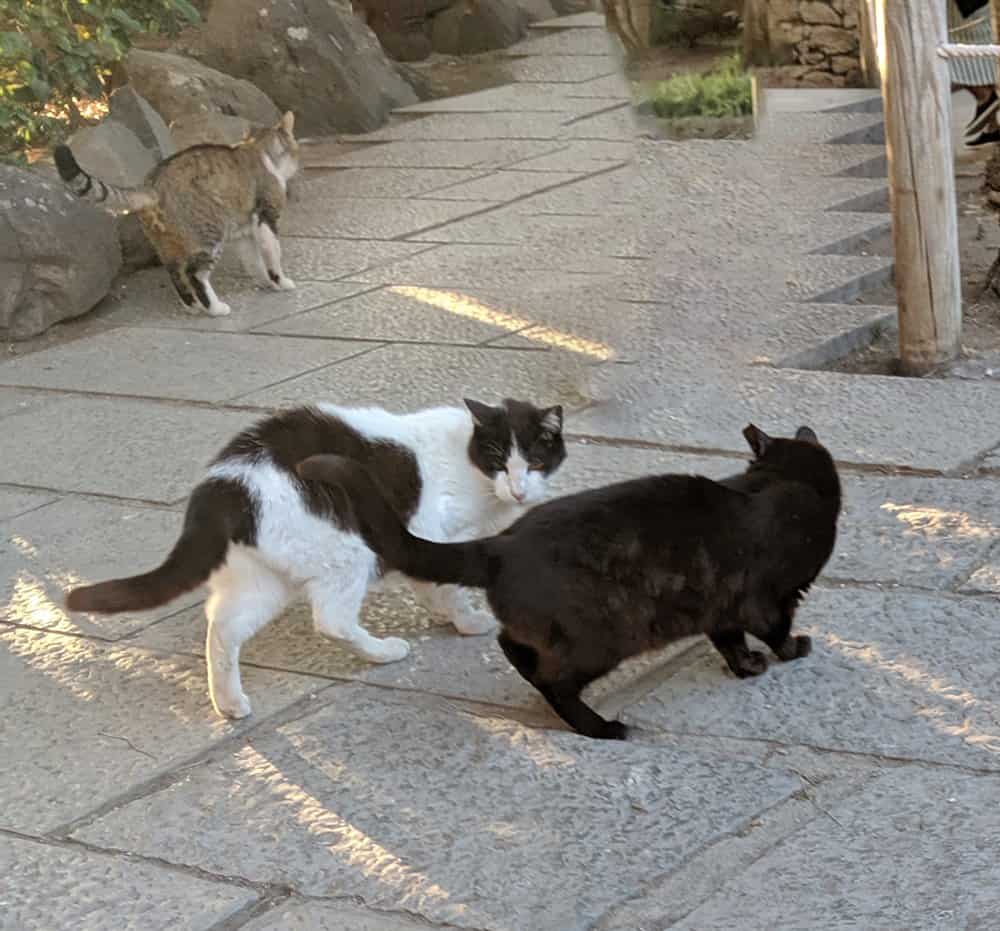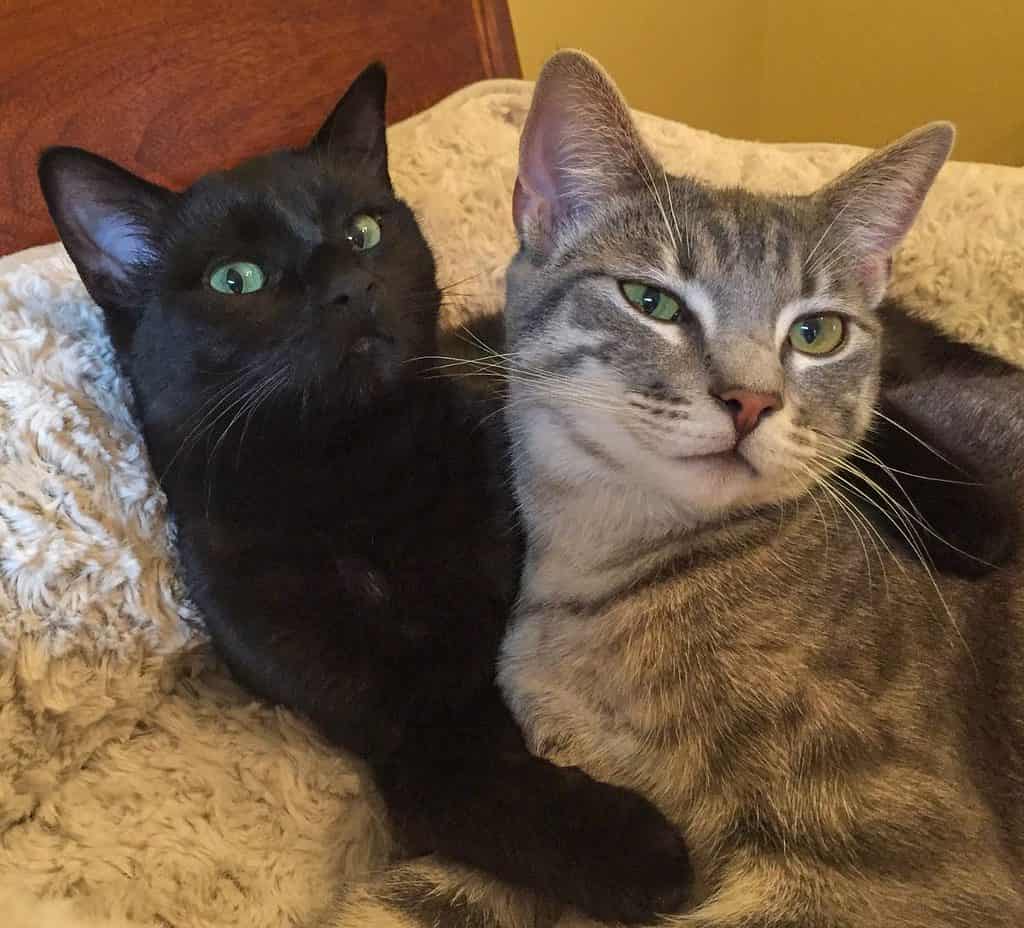Cats are independent creatures, or so we are told over and over again. Yet cats are known to form bonds with their owners and there are many examples of cats forming bonds with other cats in their household. So, are cats truly independent animals or not?
In truth, cats have evolved to be semi-social animals. This means that cats are capable of social interaction and forming social bonds, but they also have a strong inclination towards independence and solitude, especially when hunting.
Researchers believe this semi-social condition evolved at the same time as cats self-domesticated with humans between 5,000 and 10,000 years ago.
Cats form bonds with their owners
Cats form bonds with their owners. The intensity of that bond varies with each individual cat.
Some signs that a cat has bonded with their owner include seeking attention and affection, following their owner around, rubbing against their owner, purring in their presence, and bringing gifts such as toys or prey. A close bond with their owner can provide a cat with a sense of security and comfort, and can improve their overall health and wellbeing.
Some research has shown that cats can form strong attachment bonds with their owners and may even display separation anxiety when their owners are away. Symptoms of separation anxiety according to studies can be urinating or defecting outside of the litter box, excessive caterwauling, and over-grooming.
To strengthen the bond with your cat, spend quality time with them, provide them with affection and attention, and create a comfortable and safe environment for them to live in.
Cats form bonds with other cats
Cats can form close bonds with other cats, just like humans form close relationships. Some key signs that cats are bonded include mutual grooming, playing together, sleeping together, sharing food and resources, protecting each other, and communicating through purring and body language.

How to tell if you cats are bonded
Observing these behaviors can help you determine if your cats have formed a close bond and are providing each other with a sense of comfort and security.
Grooming behavior
One of the most common signs of a close bond between cats is mutual grooming. When cats groom each other, they’re creating a bond that’s similar to the bond between human friends. If you see your cats licking each other, it’s a good indication that they’re close and comfortable with each other.
Playing together
Another sign of a strong bond between cats is play. Cats will often play together, chasing each other and pouncing on toys. If your cats are playing together frequently, it’s a good sign that they’re close and enjoy each other’s company.
Sleeping together
Cats are creatures of habit, and if they’re close, they’ll often sleep together. If you see your cats curled up together, it’s a sign that they’re bonded and feel comfortable and secure with each other.
Sharing food and resources
If your cats are bonded, they might share resources like food bowls, toys, and even litter boxes. If you see your cats sharing these things, it’s a sign that they’re close and trust each other.
Mutual protection
If your cats are bonded, they’ll often protect each other. For example, if one cat is being threatened by another animal or person, the other cat will often come to its defense. This type of behavior shows that the cats have a strong bond and are willing to protect each other.
Communication
Cats communicate with each other through a variety of vocalizations such as purring. If your cats are close, they’ll often interact with each other both vocally and through body language. This type of communication is a sign of affection and a close bond.
What influences how social cats act?
There are different genetic and environmental factors that will influence how social individual cats will be. Some cats seem to need a lot of social interaction from their humans and other cats in the household. Other cats seem to prefer a lot of space and alone time.
Some cats, like snowshoe cats and ragdoll cats, have been bred to be highly attached and affectionate with their owners. Many of these cat breed that have been selectively bred for their human-oriented personalities are affectionately called “dog cats”.
In general however, how early a kitten has been handled and socialized as well as the cat’s positive and negative life experiences all influence how sociable a cat will be with humans and other cats. These collective conditions lead to varying levels of preference by individual cats to socialize. Cats with early positive life experiences, especially in their interactions with humans, are more likely to be affectionate and to seek out the company of their owners than cats that have had a negative experience.
Cats are also known to bond more closely with one human member of a household and will also show preferences with other pets in a multi-pet household.
Stray and feral cats form colonies for safety and food
Stray and feral cats will also form social connections with other cats. These social groups are known as colonies and are primarily made up of female cats and their offspring.

Colonies provide safety in numbers
One of the main reasons cats form colonies is for protection and safety. In a colony, cats can band together for mutual protection and support, which can help them survive on the streets.
Stray cats are often vulnerable to danger, including predators, harsh weather conditions, and human harm. By forming colonies, stray cats can protect each other and increase their chances of survival.
Colonies help to stray cats increase access to food and resources
Stray cats may also form colonies as a way to find food more efficiently. When there are multiple cats working together, they can hunt and scavenge more effectively, which can lead to a more stable food supply.
Stray mother cats share kitten care
In these colonies, female cats will often form close bonds and will help each other care for their kittens. This can include nursing each other’s kittens, helping to keep them warm, and protecting them from danger.
This type of cooperation allows the mothers to conserve energy and resources and can improve the chances of survival for the kittens.
Sharing kitten care can also be beneficial for the mother cats as it allows them to form strong bonds with each other and can provide them with a sense of community and support. This type of social organization is common in feral cat colonies and can improve their overall health and wellbeing.
Cats are social
Despite their reputation for being aloof and independent animals, cats can and do form strong bonds.
Some of the most common bonds that domestic cats form include:
- Bond with humans: Domestic cats can form close bonds with their owners and other humans. These bonds can include seeking attention and affection, following their owner around, rubbing against their owner, purring in their presence, and bringing gifts such as toys or prey.
- Bond with other cats: Domestic cats can form close bonds with other cats, particularly if they were raised together or introduced at a young age. These bonds can include mutual grooming, playing together, sleeping together, and communicating through vocalizations.
- Bond with dogs: Domestic cats can form bonds with dogs, particularly if the dog is gentle and non-threatening. These bonds can include playing together, sleeping together, and grooming each other.
References
Bradshaw, J. W. (2016). Sociality in cats: A comparative review. Journal of veterinary behavior, 11, 113-124. https://doi.org/10.1016/j.jveb.2015.09.004
Bradshaw, J. W., & Hall, S. L. (1999). Affiliative behaviour of related and unrelated pairs of cats in catteries: a preliminary report. Applied Animal Behaviour Science, 63(3), 251-255.
Croney, C., Udell, M., Delgado, M., Ekenstedt, K., & Shoveller, A. K. (2023). CATastrophic Myths Part 1: Common misconceptions about the social behavior of domestic cats and implications for their health, welfare, and management. The Veterinary Journal, 106028. https://doi.org/10.1016/j.tvjl.2023.106028
Schwartz, S. (2002). Separation anxiety syndrome in cats: 136 cases (1991–2000). Journal of the American Veterinary Medical Association, 220(7), 1028-1033. https://doi.org/10.2460/javma.2002.220.1028
Vitale, K. R., Behnke, A. C., & Udell, M. A. (2019). Attachment bonds between domestic cats and humans. Current Biology, 29(18), R864-R865. https://doi.org/10.1016/j.cub.2019.08.036
This article was originally written on February 11, 2023 and has since been updated.







